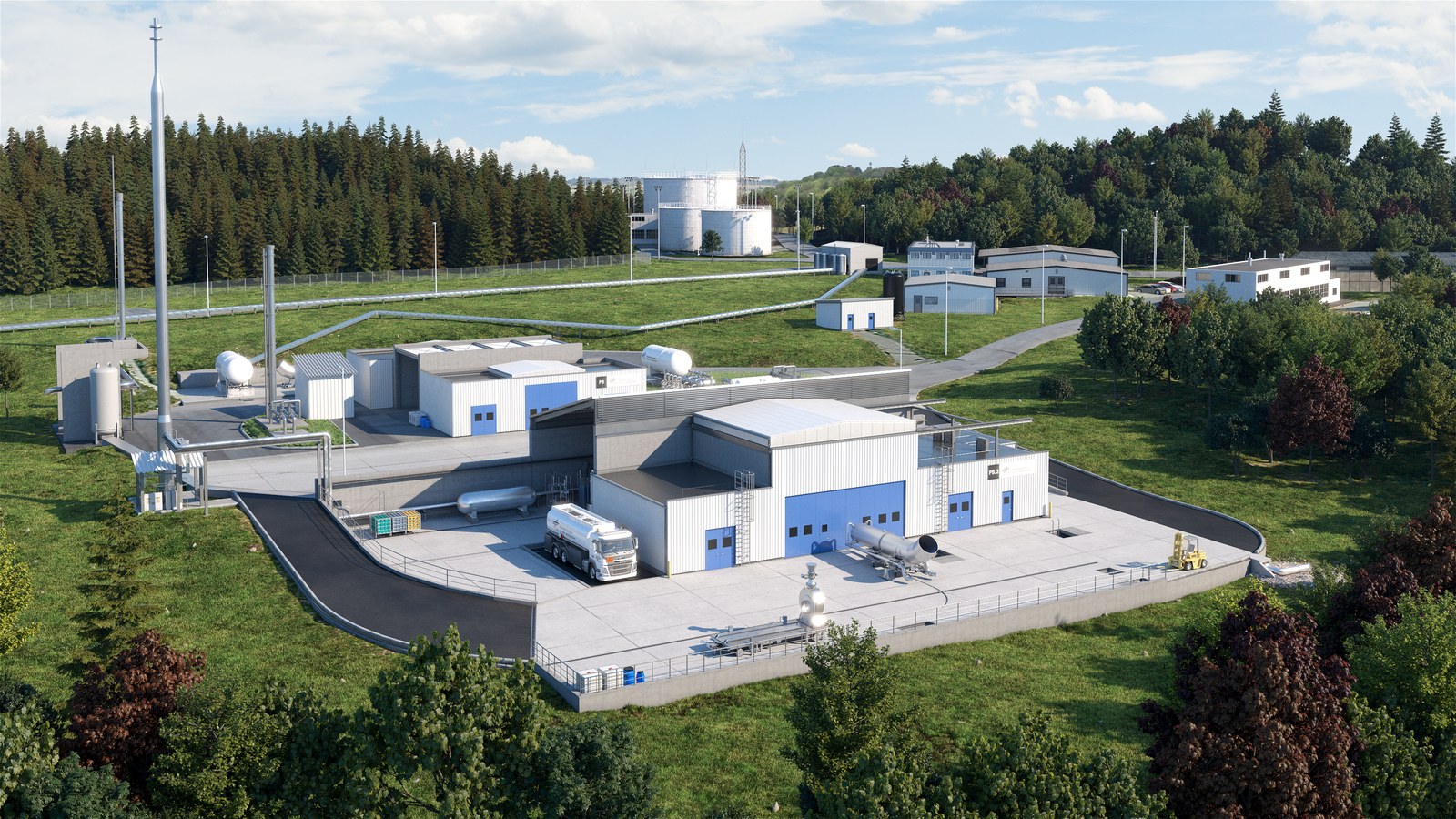Third test cell for European Research and Technology Test Stand P8

DLR

Fichtner

DLR
- DLR, CNES and ArianeGroup marked the inauguration of European Research and Technology Test Stand P8.3 with a virtual celebration.
- Forward-looking – whether at the service of scientific research or industry, P8.3 offers a unique environment for research and innovation in the field of liquid-chemical space propulsion and promotes the rapid industrial application of innovative technologies for future propulsion systems.
- Flexible – can be operated with different propellant combinations.
- Demand driven – enables the development and validation of demonstrators at different levels of technological readiness.
- Focus: Spaceflight, technology development
The German Aerospace Center (Deutsches Zentrum für Luft- und Raumfahrt; DLR) together with the French space agency (Centre national d'études spatiales; CNES) and ArianeGroup has expanded the European Research and Technology Test Stand P8. The partners opened the new P8.3 test cell on 14 April 2021 during a virtual ceremony. By expanding the facility, DLR has laid the groundwork for future space propulsion systems to be almost entirely developed and tested at its Lampoldshausen site. DLR Lampoldshausen has unique expertise, infrastructure and longstanding experience in this area. The interaction of research and development creates important synergies and reinforces engine expertise as an important pillar of European space transport.
New impetus for German-French technology partnership
"Putting new technologies into use quickly is best achieved through direct exchange between scientific researchers and industry, and with close cooperation between research and technology development," explained Anke Kaysser-Pyzalla, Chair of the DLR Executive Board. "We have been developing this cooperation with our partners CNES and ArianeGroup at the European Research and Technology Test Stand P8 for many years. The expansion of the facility will further intensify the mutual transfer of knowledge and provide important impetus for the development of future space propulsion systems."
"The new P8.3 test cell will be a key asset for preparing future European launchers, which are certain to make extensive use of liquid and reusable propulsion systems," said Jean-Marc Astorg, Head of the Launch Vehicles Directorate at CNES. "We are therefore looking forward to continuing and expanding our excellent long-standing collaboration with DLR in the fields of research and technology, as a support to the exploitation of existing launchers (Ariane 5 and Ariane 6) and preparing the new generation of liquid-fuelled, reusable launchers."
In his welcoming address, Pierre Godart, CEO of ArianeGroup Germany, added: "The P8 test stand is a perfect example of European cooperation, as it has been developed as a joint test facility from the very outset. Now, with P8.3, we have gone one step further, a test stand geared towards European projects, which will be tested here by international teams. After all, cooperation is the key to Europe’s success in space."
Bringing technologies into use
For engine development, the P8 test stand at has proven a reliable platform for over 25 years. Every year, engineers perform tests on demonstrators for approximately 80 days. The work on liquid-chemical space propulsion systems conducted here covers the entire Technology Readiness Level (TRL) spectrum, from 1 to 9 – from the functional principle through to testing and qualification for use. “This facility provides infrastructure for preparing the technologies for future launch vehicles that is unique within Europe. With it, DLR is making a significant contribution towards developing the family of Ariane launch vehicles,” said Hansjörg Dittus, DLR Executive Board Member for Space Research and Technology. The new P8.3 test cell will allow innovation cycles to be made even shorter, significantly reducing the development costs of space propulsion systems.
Targeted expansion of research infrastructure with a focus on complete engine systems
In its capacity as a centre for the research and testing of all liquid-chemical space propulsion systems, DLR's Lampoldshausen site has long been integral to European space transport. "With the construction of the third test cell, we will be in a position not only to test individual components, but also to research the way in which all of the components of a rocket engine interact, from the combustion chamber to the turbopumps, and even the valves, with a thrust of up to 7.5 tonnes," said Stefan Schlechtriem, Director of the DLR Institute of Space Propulsion. "The transition to studying the overall system is a unique selling point that we established with the DLR Liquid Upper Stage Demonstrator Engine (LUMEN) project." As part of LUMEN, DLR researchers are developing and testing a pump-fed LOX/methane engine. The LUMEN project is looking at the entire system of a cryogenic engine and building up the necessary technical and project expertise.
Joining forces for next-generation engines
This year, the CNES research engine 'Boreas' and the DLR technology demonstrator LUMEN will be the first systems to be tested at the new P8.3 facility. The researchers hope that the results of these tests can feed into the design of a joint German-French technology demonstrator that will pave the way for the achievement of European space transport targets, from fundamental principles to industrial use. In the medium term, DLR engineers are planning to operate the P8 test stand with green hydrogen produced at the Lampoldshausen site. This was made possible by a grant from the Baden-Württemberg Ministry of Economic Affairs, Labour and Housing in 2020. The Ministry is funding the project 'Zero Emission – Hydrogen Site Lampoldshausen', which focusses on the production and use of green hydrogen.
